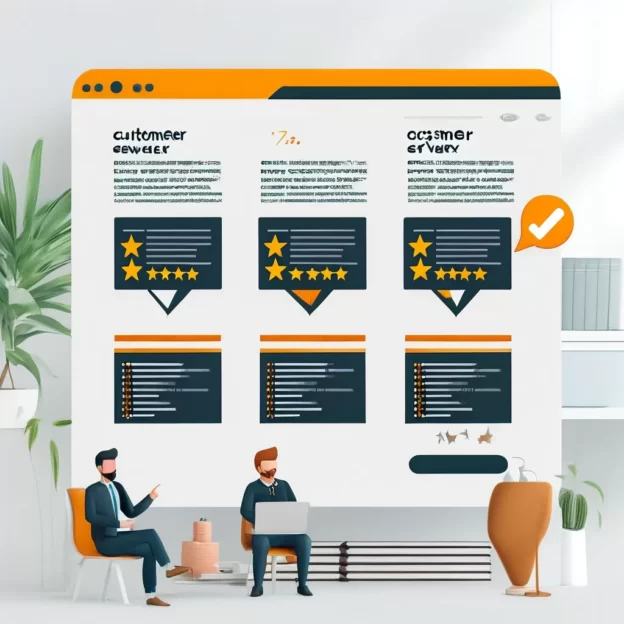Unlock Valuable Insights: A Guide to Effective Customer Feedback Surveys
In today’s competitive marketplace, simply satisfying customers isn’t enough. Businesses striving for excellence must continuously listen, learn, and adapt. This is where customer feedback surveys become indispensable tools. They are more than just a box-ticking exercise; they are powerful mechanisms for unlocking valuable insights into customer sentiment, identifying operational weaknesses, and pinpointing opportunities for growth. Understanding and acting upon customer feedback is crucial for improving products and services, enhancing customer experience, and ultimately, driving business success and retention.
The Importance of Customer Feedback Surveys
Why dedicate time and resources to conducting customer feedback surveys? The benefits are manifold and directly impact the bottom line. Here’s why they are so valuable:
1. Gauge Overall Satisfaction: A primary goal of any customer feedback survey is to measure overall customer satisfaction. Questions like “Please rate your overall satisfaction with [Company Name]” provide a high-level snapshot of how customers perceive your brand. This aggregated sentiment is vital for understanding broad trends.
2. Identify Specific Areas for Improvement: Generic satisfaction scores only scratch the surface. Well-crafted surveys delve deeper, pinpointing specific pain points. Are customers frustrated with checkout processes? Dissatisfied with customer support response times? Finding these weaknesses allows businesses to target their efforts effectively for improvement.
3. Understand Customer Needs and Expectations: Feedback surveys provide direct insight into what customers value, what they expect from your products or services, and what unmet needs they perceive. This information is invaluable for product development, service innovation, and tailoring marketing messages.
4. Enhance Customer Loyalty and Retention: When customers feel heard, they feel valued. Actively soliciting and addressing feedback demonstrates that their opinions matter. This fosters a sense of connection and loyalty, reducing churn rates and increasing customer lifetime value.
5. Inform Strategic Decision-Making: Data gathered from surveys provides concrete evidence to support strategic choices. Whether deciding on a new marketing campaign, launching a product feature, or restructuring customer service protocols, feedback data offers a customer-centric perspective.
6. Build Trust and Transparency: Regularly seeking feedback shows openness and a commitment to continuous improvement. This transparency builds trust with your customer base, positioning your company as responsive and customer-focused.
Think of a customer feedback survey as a direct line to your customers’ experiences and opinions. Neglecting this communication channel is a missed opportunity to refine every aspect of your customer interaction.
Creating Effective Customer Feedback Surveys: Key Elements
Not all surveys are created equal. To extract meaningful insights, your survey must be well-designed. Poorly constructed surveys can yield skewed results, confuse respondents, and fail to gather the necessary information. Here are the key elements of an effective customer feedback survey:
1. Clear Objectives: Before writing a single question, define what you hope to learn from your survey. Are you trying to understand satisfaction with a specific product? Identify reasons for a recent support interaction? Gauge overall brand perception? Having clear objectives ensures your questions are focused and relevant.
2. Concise and Respectful Questionnaire: Respect your customers’ time. Keep your survey short and to the point. Aim for a completion time of 5-10 minutes at most. Avoid jargon, complex language, and overly long questions. A lengthy or convoluted survey will likely lead to rushed, inaccurate responses or abandonment.
3. Relevant and Targeted Questions: Ask questions that are pertinent to your target audience and objectives. For example, a survey about mobile app usability should differ significantly from one about customer service experiences. Segmenting your audience or using conditional logic (showing different questions based on previous answers) can increase relevance.
4. A Mix of Question Types: Don’t rely solely on rating scales. Incorporate various question formats to gather different types of information: www.neighborhood feedback.applebees.com: Your Say Matters – Share Feedback & Earn Rewards! Unlock Your Applebee’s Neighborhood Feedback at www.neighborhood feedback.applebees.com
- Rating Scales: Classic tools like 5-point or 7-point Likert scales measure satisfaction levels (e.g., “How satisfied are you with our banking application process?”). Net Promoter Score (NPS) questions are also widely used.
- Multiple Choice Questions (MCQs): Offer predefined options for common feedback points. Use this for demographics (gender, age range) or asking “What is the primary reason for your visit?”
- Open-Ended Questions: Allow customers to provide detailed feedback and suggestions. These are invaluable for capturing nuances that closed-ended questions might miss. Examples include “What improvements would you suggest?” or “What was the biggest challenge you faced?”
- Ranking Questions: Ask customers to prioritize factors that influence their decision-making or satisfaction.
- Matrix Questions: Useful for comparing satisfaction levels across different aspects of a product or service (e.g., a table asking users to rate various features).
5. Clear and Actionable Language: Ensure questions are unambiguous. Avoid double-barreled questions (asking about two things at once). Frame questions neutrally and avoid leading or biased wording that influences the respondent’s answer. Share Your Neighborhood Feedback on Applebee’s Website – Connect and Review!
6. Targeted Audience and Optimal Timing: Your survey should reach the right people at the right time. Consider surveying customers immediately after a significant interaction (like a purchase or support call) for real-time feedback. Alternatively, reach out to a broader audience for general opinions. Use segmentation to tailor messages.
7. Incentivize Participation: People are busy. Offering a small incentive (e.g., a discount code, entry into a draw, or loyalty points) can significantly boost response rates.
Examples of Effective Customer Feedback Survey Questions
To illustrate how to construct questions, here are some examples covering different aspects:
Measuring Overall Satisfaction:
- “On a scale of 1 to 5, please rate your overall satisfaction with [Company Name/Brand].” (Classic Likert Scale)
- “How likely are you to recommend [Company Name] to a friend or colleague?” (Net Promoter Score – NPS)
Evaluating Specific Interactions or Processes:
- “How satisfied are you with our [Specific Product/Service/Banking Application Process]?”
- “Please rate your experience with our customer support team regarding [Specific Issue, e.g., response time, resolution quality].” (Consider using a scale here)
- “How easy was it to complete the [Specific Task, e.g., account setup, return process]?”
Understanding Open Feedback:
- “What is the primary reason for your recent visit/contact with us?”
- “What aspects of your experience with us were most positive?”
- “What improvements would you like to see us make?”
- “Are there any other comments or suggestions you’d like to share?”
Remember to align your questions with your specific objectives. A comprehensive survey might include a combination of these types to gather both quantitative data (easy to analyze statistically) and qualitative insights (providing context and depth).
Choosing the Right Tool and Analyzing Survey Data
With clear objectives and well-crafted questions, the next steps involve delivery and analysis.
Selecting a Survey Tool: Numerous platforms are available for creating and distributing customer feedback surveys, ranging from simple spreadsheet tools (like Google Forms or Microsoft Forms) to sophisticated enterprise solutions (like SurveyMonkey, Qualtrics, or even tools within Service Management Platforms). Consider factors like ease of use, question types supported, sample size needs, data analysis capabilities, and budget when choosing your tool. Many offer templates specifically for customer feedback.
Distributing Your Survey: How you reach your customers matters. Common methods include email invitations, links posted on your website or app, inclusion in invoices or receipts, SMS invitations, or embedding the survey directly within a customer portal or support interaction. A/B testing different distribution methods can help identify the most effective channels.
Analyzing the Data: This is where the true value of a customer feedback survey is unlocked. Don’t just collect data; interpret it.
- Data Cleaning: Ensure your data is accurate and free from errors or
References



